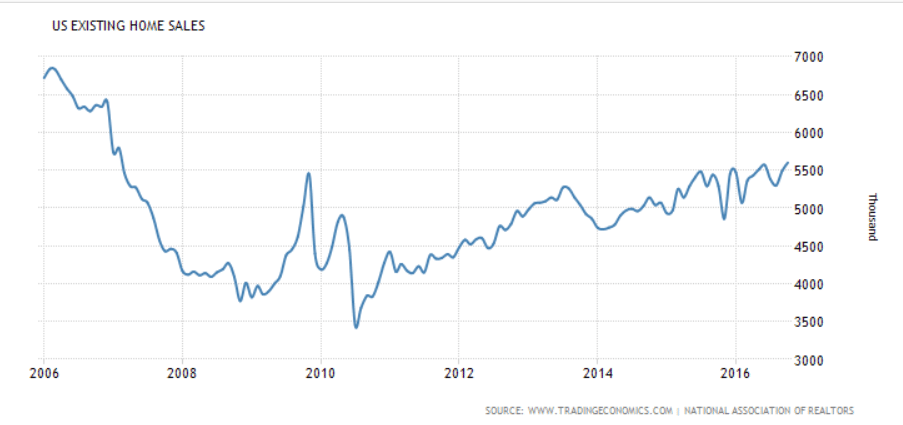These sales are reported based on actual closings, and they look to have flattened around the 5.5 million/yr rate. But that was before lenders hiked mortgage rates due to Trumpenomics frears, and mortgage purchase apps did drop a full 6% last week. And this number is not ‘population adjusted’:

Talk about cheerleading- the order book remains in contraction:
UK Factory Orders Rise in November: CBI
The Confederation of British Industry order book balance rose to -3 in November 2016 from an eight-month low of -17 the previous month and beating market expectations of -9. It was the strongest reading since June this year, before the Brexit vote, amid higher expectations for output growth in the next three months (+24 from +13 in October) and inflation (+19 from +8), while export orders fell (-11 from -6).
In other words, 0 or very near 0 growth forecast for 2016 vs 2015:
With an upward bias, November sales are forecast to end at a 17.7 million-unit seasonally adjusted annual rate, the third consecutive month the SAAR finished above the year-to-date total, which stands at 17.3 million through October.
…
If November’s outlook holds firm, year-to-date volume will total 15.8 million units, a smidgeon above 11-month 2015’s 15.7 million, but keeping the prospect alive that 2016 could end as a record year.
Read more at http://www.calculatedriskblog.com/#yQFj4O6LyjwloQYQ.99
Pain and gain for India’s economy after drastic withdrawal of cash supplies: Analysts
By Saheli Roy Choudhury
Nov 21 (CNBC) — HSBC’s chief India economist, Pranjul Bhandari, said in a note that about 60 percent to 80 percent of India’s consumption basket is cash-intensive, including food, transport, real estate and restaurants. “We assume that growth for these components halve on the back of the monetary shock,” Bhandari wrote. She expected India’s full fiscal year gross domestic product (GDP) growth to be 0.7 to 1 percentage point lower.
A chief target of Modi’s demonetization efforts is India’s burgeoning shadow economy, which Bank of America Merrill Lynch (BAML) research analyst Sanjay Mookim estimates at 25 percent to 30 percent of GDP. In a note, Mookim said the immediate impact on the black economy could lead to a “much slower consumption,” especially once a new India goods and services tax (GST) kicks in next year.
Analysts pointed out there could still be some beneficial outcomes – first, it would cut the supply of black money circulating the economy and bring some of it into the formal economy over time. Secondly, the government could see tax gains if it succeeds in “unearthing unaccountable money” from the shadow economy, according to analysts from Singapore’s DBS Bank.
As they say, seems he’s ‘not quite right’…
Donald Trump is attacking foes on Twitter like he’s campaigning
Donald Trump tweeted 37 times between the election and Monday afternoon, and nearly half could be considered hostile or defensive.
